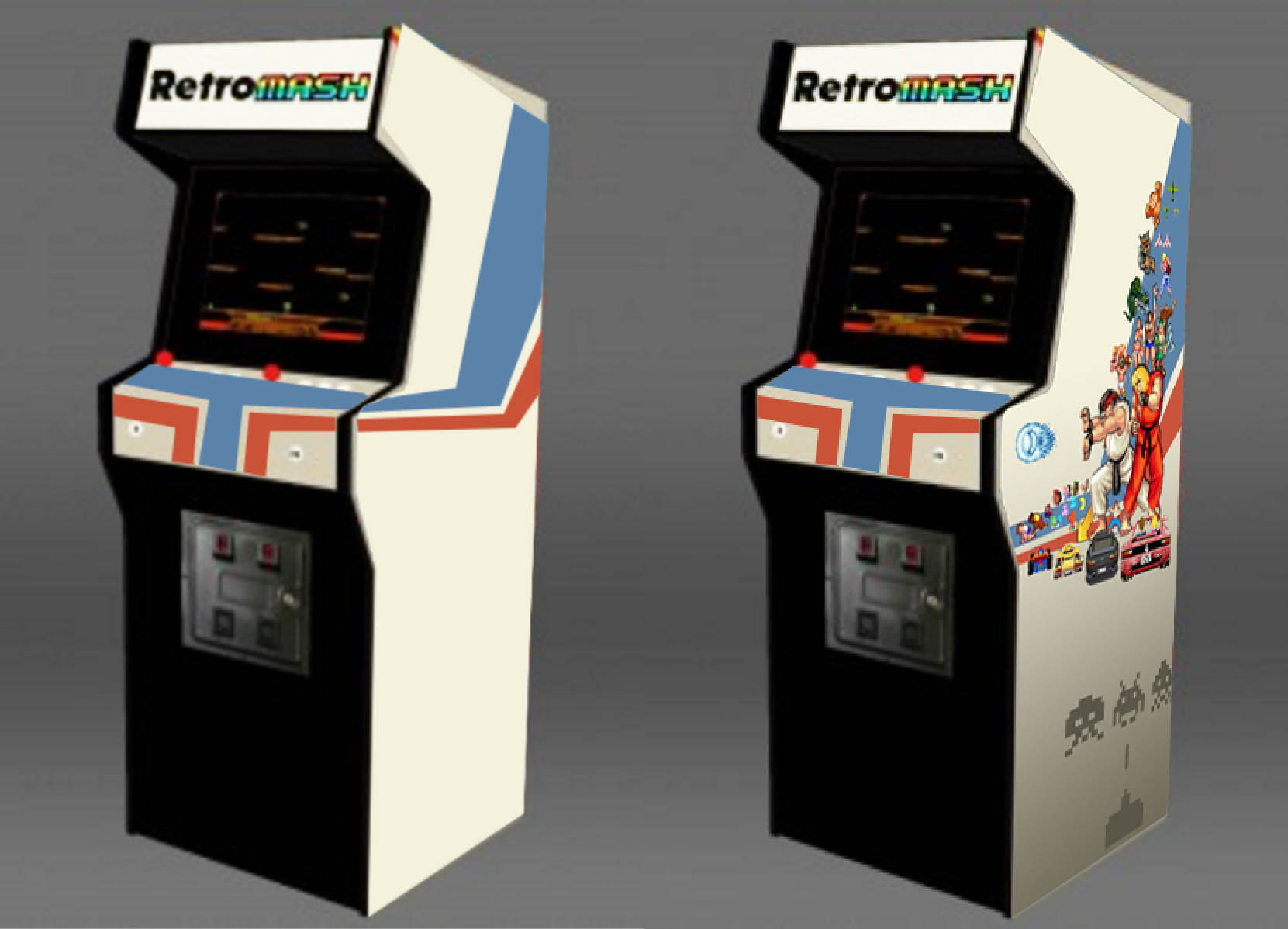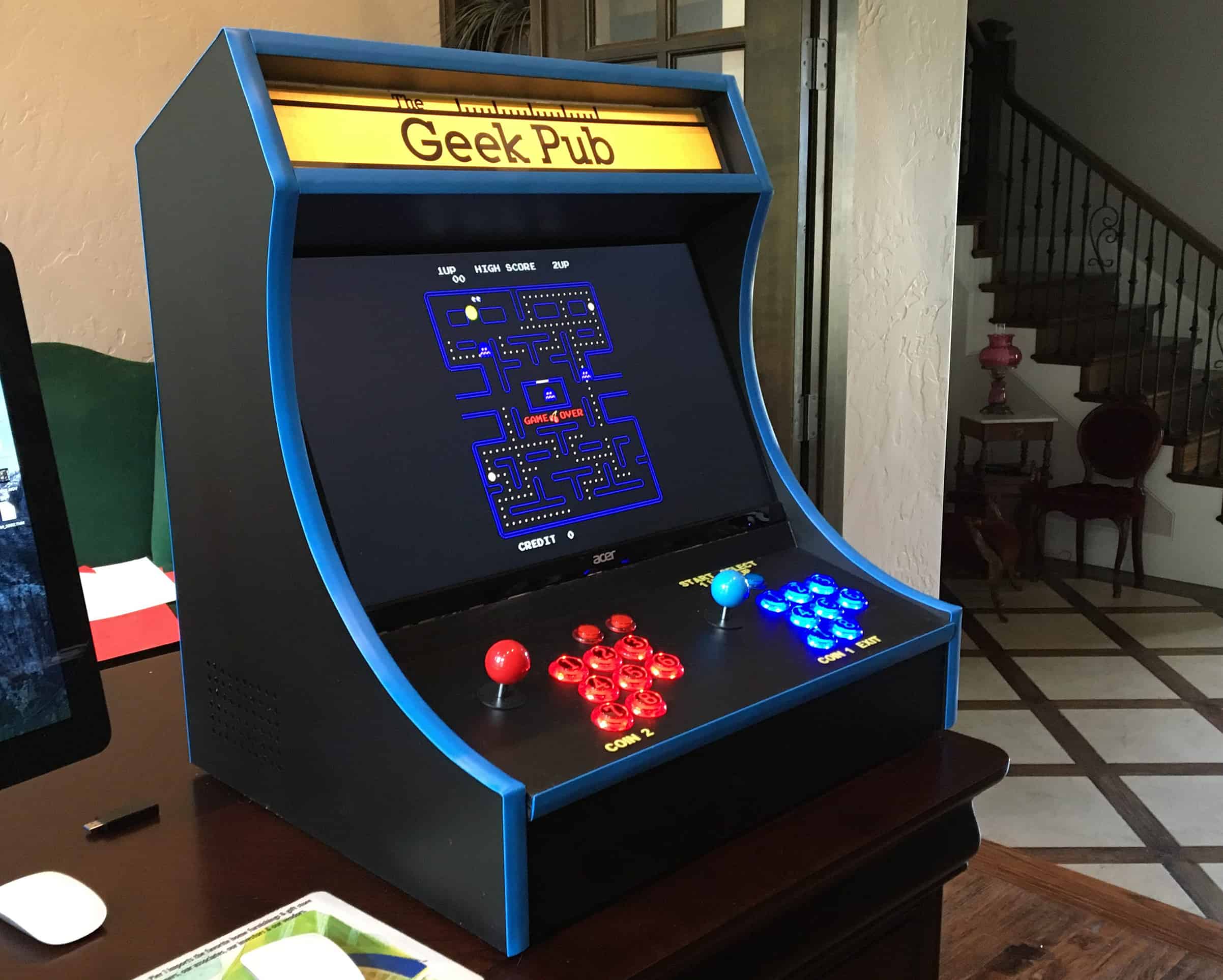Preparing the Arcade Cabinet
Okay, so you’ve got your awesome arcade cabinet project lined up, right? Before we unleash the paint, let’s get this baby prepped. Finding the right cabinet and getting its surface ready is key to a killer finish that’ll last longer than a night at the local *mamak*. Think of this as the foundation – a solid base means a stunning masterpiece.
Sourcing and Assessing the Arcade Cabinet
Finding the perfect cabinet is like finding the perfect vintage record – it takes patience and a keen eye. Consider size; you need enough space, but not so much it becomes a monster to move. Condition is crucial; minor scratches are manageable, but major damage needs serious consideration (and maybe a higher budget for repairs). Style matters too; think about the overall aesthetic you’re aiming for – classic, retro-futuristic, or something totally unique? Remember to check for any missing parts or significant structural issues before you commit.
Tools and Materials for Surface Preparation
Before you even think about grabbing a brush, gather your arsenal. You’ll need: a variety of sandpaper (fine, medium, and coarse grits), a sanding block or electric sander (for larger surfaces), tack cloths, a scraper (for removing stubborn paint or stickers), a degreaser, safety glasses, a respirator mask (because breathing in dust is a big no-no), and of course, primer suitable for the cabinet’s material (usually wood or metal). Don’t forget drop cloths to protect your workspace!
Cleaning and Prepping the Cabinet Surface
Proper surface preparation is the unsung hero of any paint job. A poorly prepped surface will lead to peeling paint and a generally disappointing outcome. This is where the magic happens.
| Step | Action | Materials | Visual Representation |
|---|---|---|---|
| 1. Cleaning | Thoroughly clean the cabinet’s surface using a degreaser and a soft cloth. Remove any dirt, grease, or grime. Let it dry completely. | Degreaser, soft cloths | Imagine the cabinet looking grimy and dirty. Then, after cleaning, it’s visibly cleaner, with all the grime gone. |
| 2. Removing Old Paint/Stickers | Carefully remove any old paint or stickers using a scraper. Be gentle to avoid damaging the underlying surface. | Scraper, heat gun (optional for stubborn stickers) | A before and after image showing a cabinet with peeling paint and stickers, then the same cabinet with a smooth, clean surface. |
| 3. Sanding | Sand the entire surface using different grits of sandpaper, starting with coarser grits to remove imperfections and gradually moving to finer grits for a smooth finish. Use a sanding block for even pressure. | Sandpaper (coarse, medium, fine), sanding block | A sequence of images showing the surface becoming progressively smoother with each sanding stage. The final image shows a perfectly smooth surface. |
| 4. Primer Application | Apply a thin, even coat of primer using a brush, roller, or spray gun. Let it dry completely according to the manufacturer’s instructions. Multiple coats may be needed for optimal coverage. | Primer, brush/roller/spray gun | An image showing the cabinet with an even coat of primer applied, covering all the previously sanded surface. |
Importance of Proper Surface Preparation
Think of it this way: your paint is like a fancy outfit. You wouldn’t wear a beautiful dress over dirty, wrinkled clothes, right? The same applies to painting. Proper preparation ensures the paint adheres properly, preventing peeling, chipping, and other disasters. It also creates a smooth, even surface for a professional-looking finish that will last. A well-prepared surface is the secret to a long-lasting, stunning paint job. Trust me, your future self will thank you for taking the time to do this right.
Painting Techniques and Designs

Yo, fellow Pontianak painters! Ready to transform your arcade cabinet from dusty relic to gleaming masterpiece? Let’s dive into the world of paint techniques and designs, ensuring your cabinet screams “retro rad” or whatever vibe you’re chasing. We’re talking serious style upgrades, here.
Painting an arcade cabinet isn’t just slapping on some color; it’s a journey into artistic expression. Choosing the right technique and design is crucial for achieving the desired look and feel. We’ll explore various approaches, weighing their pros and cons, and then map out a killer paint plan you can actually follow.
Airbrushing, Spray Painting, and Hand Painting: A Comparison
Airbrushing offers incredible detail and smooth gradients, perfect for intricate designs or photorealistic artwork. However, it requires specialized equipment and a bit of skill to master. Think of it as the high-end, professional approach. Spray painting is faster and easier, ideal for solid colors or simple designs, but achieving fine details can be tricky. It’s your solid, reliable workhorse. Hand painting provides maximum control and allows for unique textures and artistic flourishes, but it’s the most time-consuming method. It’s the artistic, handcrafted route. Each technique has its own strengths and weaknesses, so the best choice depends on your skill level, the complexity of your design, and your available resources.
Popular Arcade Cabinet Paint Designs
The possibilities are endless, but here are some popular styles to inspire your own creative vision:
- Retro Styles: Think classic pixel art, bold geometric patterns reminiscent of 80s and 90s game aesthetics, or a faithful recreation of original cabinet artwork. Imagine a vibrant Pac-Man ghost design or the iconic Donkey Kong barrel.
- Custom Artwork: Unleash your inner artist! Create original designs, incorporating your favorite characters, landscapes, or abstract patterns. Picture a detailed fantasy scene or a psychedelic, swirling design.
- Character-Themed Designs: Feature your favorite game characters, either in a realistic or stylized portrayal. Think a fierce Ryu from Street Fighter or a charming Pikachu from Pokémon. The possibilities are endless and totally depend on your personal preferences.
Detailed Paint Design Plan: A Retro Pixel Art Example
Let’s say you’re going for a retro pixel art design featuring a classic spaceship. Here’s a step-by-step plan:
1. Sketching: Lightly sketch your design onto the cabinet using a pencil. Focus on the overall composition and placement of elements. Remember, you can always adjust as you go.
2. Priming: Apply a high-quality primer to ensure the paint adheres properly. A good primer provides a smooth surface for painting and enhances paint longevity.
3. Base Coat: Apply a base coat of black paint to create a solid background for your pixel art. This ensures the colors pop.
4. Color Mixing: Mix your paints according to your design. For a pixelated spaceship, you might need various shades of grey, blue, and red. Experiment with mixing to achieve the perfect hues.
5. Pixel Application: Carefully paint each pixel using a small brush. Maintain clean lines and consistent size for a true pixelated effect.
6. Blending (Optional): If you want a more blended look, you can carefully blend the colors using a dry brush technique. This adds subtle depth to the design.
7. Details: Add fine details such as windows, lights, and other spaceship elements. This is where you can showcase your artistic skills.
8. Clear Coat: Finish with a few coats of clear coat sealant to protect your artwork from scratches and wear. This step is crucial for longevity.
Remember: Patience is key! Take your time, and don’t be afraid to make mistakes. It’s all part of the process.
Finishing Touches and Protection: Painting An Arcade Cabinet

Okay, so you’ve got your awesome arcade cabinet painted and looking slick. But the real magic happens now – protecting all that hard work and making it last. Think of this as the final boss battle before you can finally play some retro games! We’re talking about sealing the deal, literally.
Protecting your freshly painted masterpiece is crucial. A few coats of the right stuff will prevent chips, scratches, and fading, keeping your cabinet looking brand new for years to come. We’re diving into clear coats, sealants, and UV protection – the holy trinity of arcade cabinet preservation.
Clear Coats
Clear coats are your first line of defense. They’re like a superhero shield for your paint job, adding a layer of protection against everyday wear and tear. Think of it as wrapping your cabinet in an invisible armor. There are several types, including acrylic, polyurethane, and lacquer. Acrylic is generally easy to work with, offering a good balance of durability and ease of application. Polyurethane is known for its toughness and superior protection against scratches, making it a popular choice for high-traffic areas. Lacquer dries quickly but can be more sensitive to humidity and temperature changes during application. Apply several thin coats, allowing each to dry completely before applying the next, to achieve the best results and avoid runs or drips. Imagine each coat as a tiny, protective hug for your artwork.
Sealants
Sealants offer an extra layer of protection, especially against moisture and chemicals. They’re like adding a second skin of defense on top of the clear coat. This is particularly important in areas prone to spills or humidity, ensuring your paint job stays vibrant and intact. A good quality sealant can prevent discoloration and keep your cabinet looking fresh even after years of gameplay. Think of it as waterproofing your cabinet’s paint job against the inevitable spills of sugary drinks or greasy snacks that might happen during intense gaming sessions.
UV Protection
UV rays from sunlight are the enemy of vibrant colors. Over time, they can fade your paint job, leaving your cabinet looking dull and washed out. Adding a UV protectant to your clear coat or sealant is like giving your cabinet sunscreen. It creates a barrier against harmful UV rays, preserving the vibrancy of your colors for a longer time. This is especially important if your cabinet is going to be displayed in a well-lit area. Imagine the difference between a faded, dull cabinet and one that retains its original pop of color – the UV protectant ensures the latter.
Reassembling the Cabinet, Painting an arcade cabinet
Now for the fun part – putting everything back together! This is where your patience and attention to detail will really shine. Start by carefully reattaching all the control panels, buttons, and joysticks. Make sure everything lines up perfectly with your artwork and that all the screws are tightened securely. You might encounter some challenges, like stripped screws or misaligned parts. If a screw is stripped, try using a slightly larger screw or a wood glue to reinforce the hold. For misaligned parts, take your time and carefully adjust them, ensuring everything fits snugly. Remember, a little patience goes a long way! Think of it as a rewarding puzzle, bringing your project to life piece by piece.
